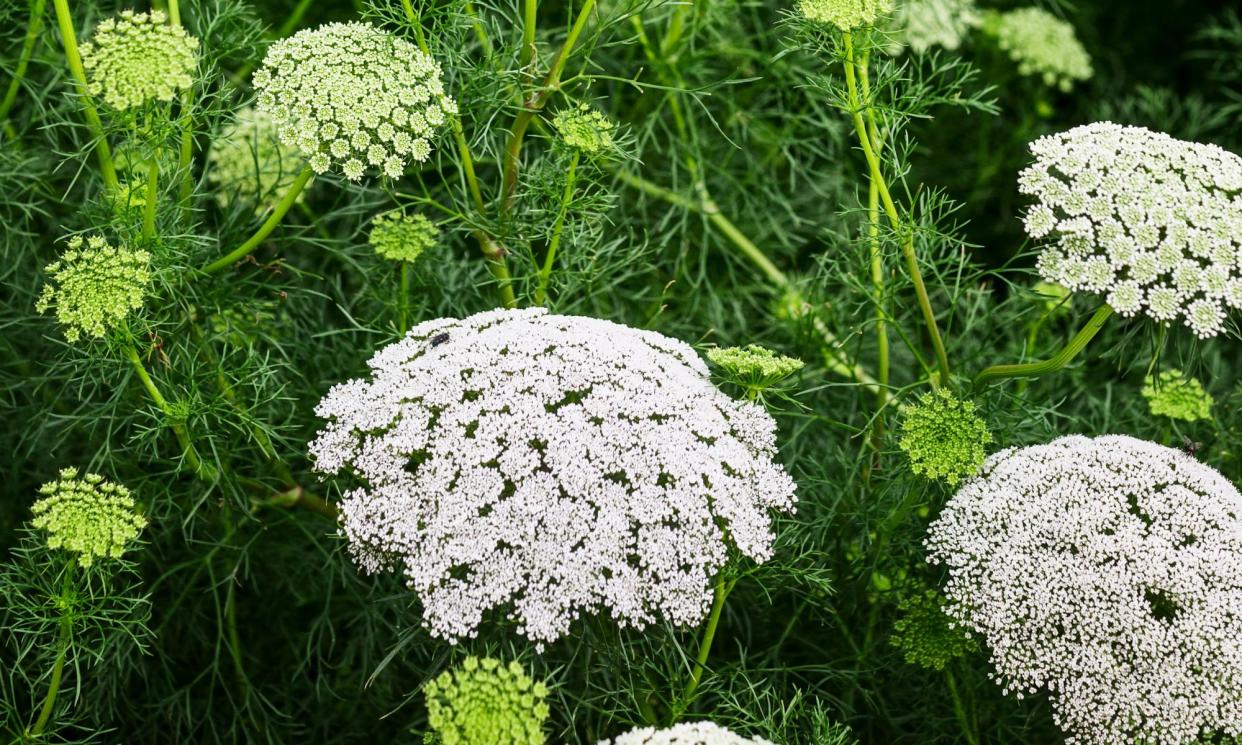Resist the urge to fill all gaps in your borders, but if you must, sow hardy annuals

The ritualistic morning garden inspection returned in earnest about a month ago. Taking a look every day offers a chance to pick slugs off things or unearth unwanted volunteer plants (weeds, if you prefer), but I gain more from noticing what’s growing: the perennials that have popped up overnight, what’s filling out, what’s in bloom, what’s going over. We have yet to reach the full-on helter-skelter of May, but we’re not far off: things are changing every day.
It can also be a challenge to that most crucial of gardening tools: patience. My grandfather always advised us to wait until June to see if a plant was going to do anything or not – namely, return. But even heeding that I understand the temptation to fill in the gaps in a bed.
There are a couple of ways to tackle this. One is by raiding the garden centre for established plants – where, at this time of year, they insist you “spruce up your garden” and “get summer-ready!” as if your garden were a pale, wintry body being siphoned into swimwear. I put an informal garden centre ban in place a few years ago when I got nerdy about nurseries and militaristic about only buying peat-free plants, and now tend to order from Beth Chatto’s nursery or speciality growers.
My grandfather always advised waiting until June to see if a plant would do anything – ie return
The other option is to sow hardy annuals: seeds that will grow into flowers by the summer. Hardy because there’s still a frost risk in some parts of the country, and while most need some warmth in the soil to get going, they will survive a cold snap. This is why you can also sow hardy annuals in late summer and early autumn, but if – like mine – yours didn’t come to much, you get another chance now.
Related: Houseplants aren’t really meant for inside, so give them some attention
You can also sow direct now, scattering seed on to your flowerbeds. If you have the time and inclination to sow into trays or pots (it can be very meditative), some varieties prefer this, and it does mean you can get a plant established before you subject it to the slugs. Good seed packets will come with instructions, but as a general rule the lighter the soil the better chance you’ll have of success. Removing weeds first will give your seedlings more space to grow. Grower-florist extraordinaire Milli Proust has just released a handy pocket manual, The Grower’s Guide: Seeds, if you want a more thorough education.
I keep a kind of capsule wardrobe within the greater chaos of my seed box, and this year I’ve sown nasturtium ‘Salmon Baby’; calendula ‘Snow Princess’; Ammi majus laceflower; and Daucus carota ‘Dara’ – my most minimalist offering yet, chosen for ease, hue and the ability to fill a spot. I’m a fan of Chiltern Seeds for its wide range and colour-coordinated catalogues.


